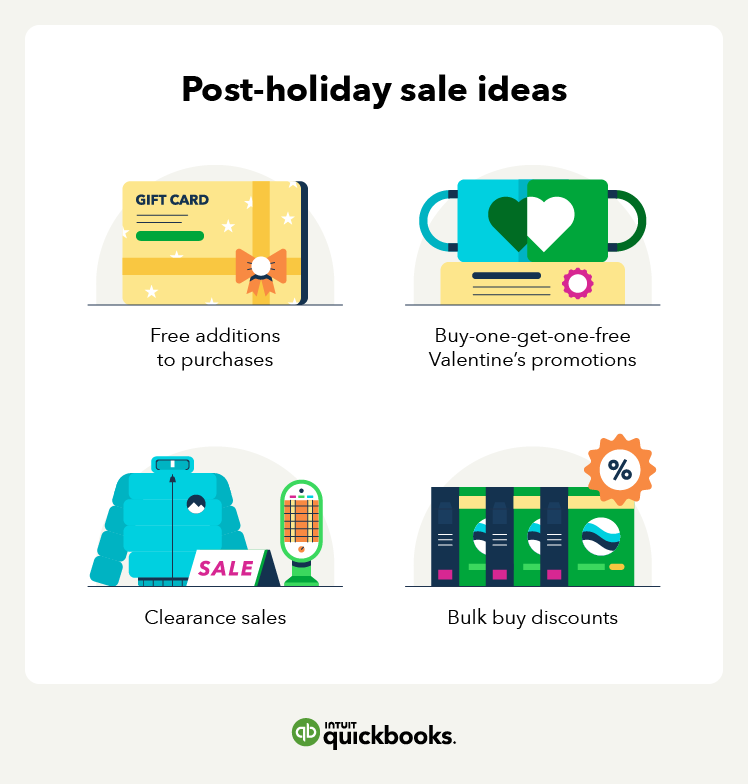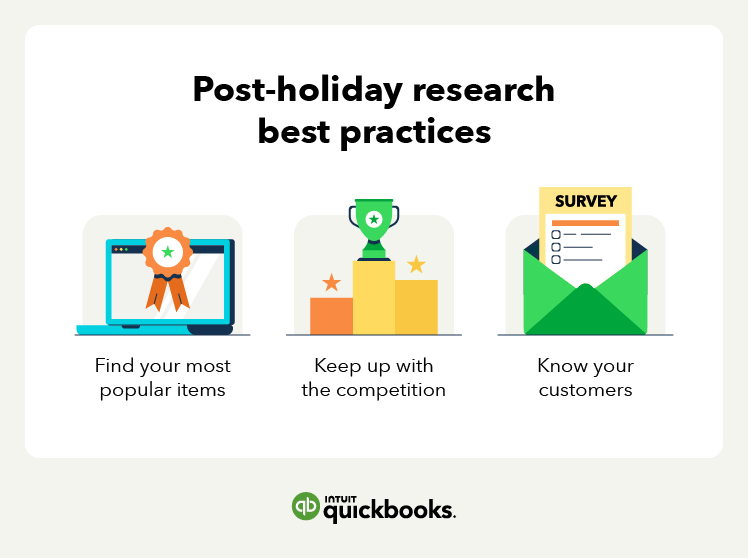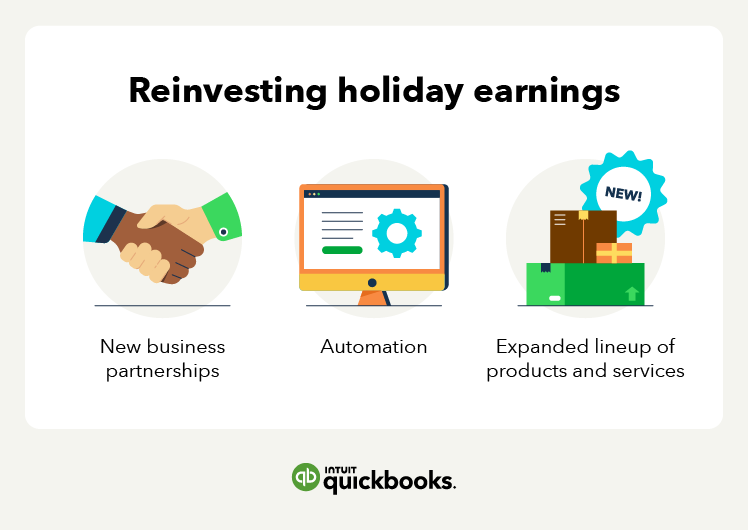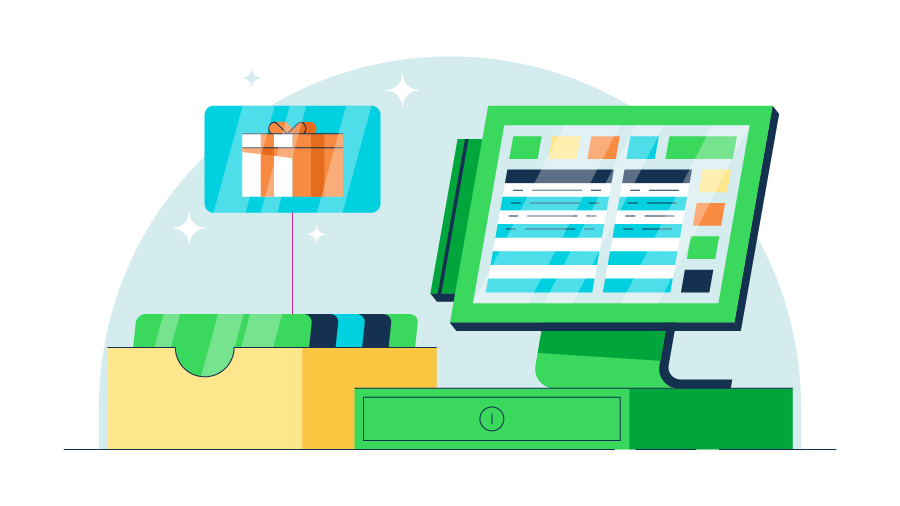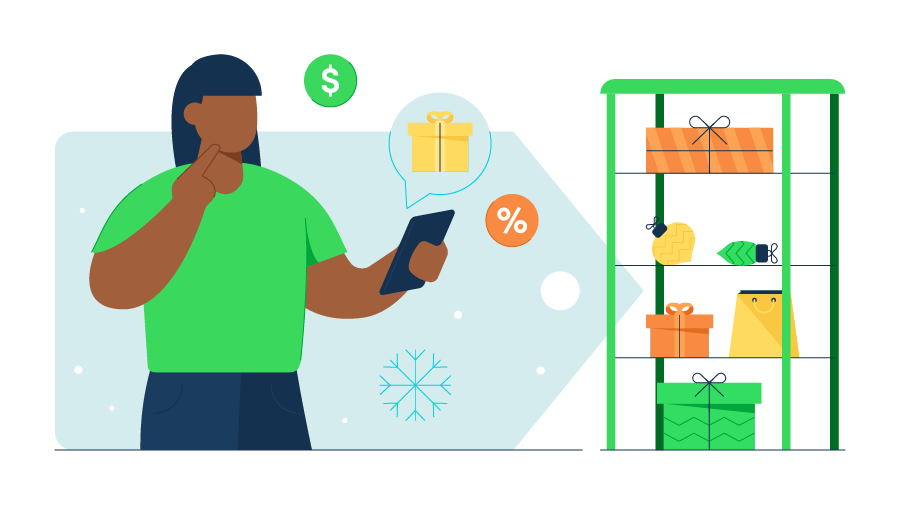Most holiday offers dry up after the holiday has passed, but savvy business owners can use that to their advantage. We’ll look at the December holiday season as an example. New year sales keep the holiday momentum by offering discounts longer than the competition. Here are some examples of how to achieve this:
- Clearance sales
- Buy-one-get-one-free offers
- Bulk buy discounts
- Bonus items on purchases over a certain amount
- Limited time coupons on certain products
Because tightened inventories cut down on the number of after-Christmas sales, you don’t have to cut as much profit for the promotional pricing—instead, focus on advertising the sale to make sure the news reaches your customer base.
Tip: Keep in mind the different advertising channels customers can find and how the holidays impact that. For example, websites typically see a lot less website traffic during holidays so consider restrategizing more efforts towards social media and direct marketing.
3. Foster customer loyalty
You can prepare for the post-holiday slump during a peak sales period. When new clients come in during the holidays, offer your best customer service and fulfillment. That way, even without offering discounts, you can attract customers who like your service enough to return.
Highlight your customer loyalty program
Many small businesses invest in a customer loyalty program. These programs let buyers earn points they can redeem for discounts or extra services. Offering bonus points during the holidays will bring in more customers after Christmas sales end.
Leverage past holiday deals
Some businesses offer time-sensitive deals after the holidays. These give benefits to holiday shoppers that they can only redeem after the new year. They include:
- Limited time offers
- Coupons on select items
- Early preorders on upcoming products
- Free services related to products bought during the holidays
Whichever option you choose, the point is to make holiday interest last well into the new year.
4. Revamp your marketing
While holiday marketing is straightforward, drawing customers outside the busy season takes more research. Instead of advertising your holiday deals and seasonal items, you have to find your audience’s goals and pain points. By marketing to their objectives and obstacles, you can reach a new audience or expand your current one.
Evaluate different periods (month-over-month, quarter-over-quarter, year-over-year) when evaluating performance for improvements—seasonality and other factors may be at play, so look at different timeframes to compare.
Review customer testimonials, changes in the field, and data from your CRM to plan new strategies. Then, implement different outreach methods at once and compare their success. Assessing and revamping marketing based on last year’s or last season’s data is one of the best ways to improve customer reach and make for more successful post-holiday sales.
5. Encourage returns
At first, increasing returns after the holidays sounds counterintuitive. However, holiday returns are a great way to bring customers back to your store. There, you wow them with your products and service. In addition, customers prefer a no-questions-asked return policy, so providing this can give you an extra edge.
The best ways to capitalize on returns include:
- Offering bonus store credit if customers forgo cash returns
- Providing discounts on other items when processing returns
- Streamlining returns by sending customers packing for their unwanted item
6. Refresh your inventory
Many businesses consider the holidays their busiest time of the year. While prices are low, they tend to sell out of their most popular products. Use the post-holiday sales slump as a chance to take stock of your most popular items and refill them ASAP. You can order unpopular items less often to prevent overstocking them and save money.
Use customer fulfillment to your advantage
Keep customer fulfillment in mind when restocking your shelves. Undamaged returns can go back into your inventory at no added cost. You can also empty abandoned shopping carts and remove holds on unwanted items. Recirculating these products will save money when refreshing your stock.
QuickBooks inventory management software will help you always know what’s in stock and what’s on order.
7. Launch a new service or product
New product launches are one of the best ways to attract attention without offering a discount. You'll put the item on your customers' radar by marketing a new product during a sales peak. Then, when the slump hits, your clients have an excuse to return.
Avoid rushing an unfinished product out the door to avoid the post-holiday slump. While great timing for your product launch is crucial, faulty releases can push customers away instead of bringing them back.
8. Research the field











